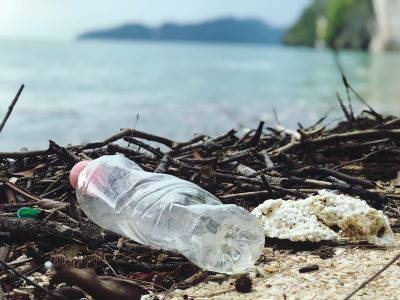
Our Chance to Save the Oceans from Plastic
3rd Aug 2020
Two new studies found that the world is on track to triple the amount of plastic we send into our oceans in only two decades. But if civic and business leaders get on top of the crisis, we could reduce that rate by 80%.

The Results
The amount of plastic we send annually into our oceans could triple within two decades if we do nothing. The world produces hundreds of millions of tons of plastic every year, and 40% of it ends up polluting the ocean or land. In 2016, 11 million metric tons of plastic ended up in the ocean, where it can kill sea creatures, destroy entire marine ecosystems, and even affect human health. Two new studies, one by the Pew Charitable Trusts and SYSTEMIQ, and one in the journal Science, show we could see 1.3 billion tons of plastic pollute our water and land by 2040 if the world does nothing.
But it's Not too Late
Through ambitious policies and practices, governments could drastically reduce our plastic consumption. It's not too late to prevent this. The authors of the studies developed an economic model to quantify the rate and scale at which plastic would enter the ocean by 2040, allowing them to make changes if we reduce plastic production and use, or increase recycling. A former Environmental Protection Agency regional administrator and president of Beyond Plastics, Hack Enck, said the report demonstrates how urgently we need to get started. "We are heading into a very dangerous situation," he said. The reports show that if governments follow through on their current commitments to reduce plastic, like bans on single-use items, they would only reduce annual flow into the ocean by 7%.
However, other scenarios in which governments focus on removing plastic subsidies and decreasing production and increasing waste collection and global recycling capacity, show a more positive result. No single solution on its own will bring the annual rate of plastic entering the oceans below even 2016 levels by 2040. But by combining policies and practices that reduce demand, redesign products and switching to paper substitutes in some sectors and scaling up collection, sorting and recycling rates, we could see better outcomes. If all these strategies were employed at the rates that are technically feasible right now, we could lower the rate of plastic flow into the ocean by 52% below 2016 by 2040. That would also come with a massive reduction in carbon dioxide emissions thanks to decreased oil use for plastic production. Countries would need to make massive investments to increase recycling capacity and change production. However, this would make plastic waste management less costly to governments than not making any changes.
The Continuing Problem
Drastic action by governments still would not completely mitigate the plastic problem - but it is a very necessary start. This best case scenario still wouldn't completely eliminate the problem of plastic production, though. Between 4 and 7 million tons of plastic would still enter the ocean in 2040. Eliminating that pollution would require technological advances and new business models. After all, plastic pollution comes from many different sources, including clothing and cars. However, the reports show that world leaders have the resources to make a huge dent in our plastic problem. Doing so would require making changes and taking on the fossil fuel industry. But, for the health of our planet, it's the only choice.
How We Can Help
Our products are compostable and are a part of the solution to the plastic crisis. Compostable plastics are an alternative to oil-based, non-degradable plastics. By switching to compostable foodservice packaging, you can make a small difference – and, by lobbying local councils we can ensure the necessary disposal options are there for these alternative plastics. And, by putting pressure on the government, we can achieve ambitious actions to reduce plastic. Have a look at our product page to see what compostable plastics we sell.
Information taken from Gizmodo. Look back on Plastic Free July and read about the potential single-use plastics ban in Queensland, on our blog.
Planet Friendly Packaging acknowledges the traditional custodians of the land on which we work. Our thoughts go out to everyone affected by COVID-19. Stay safe.

